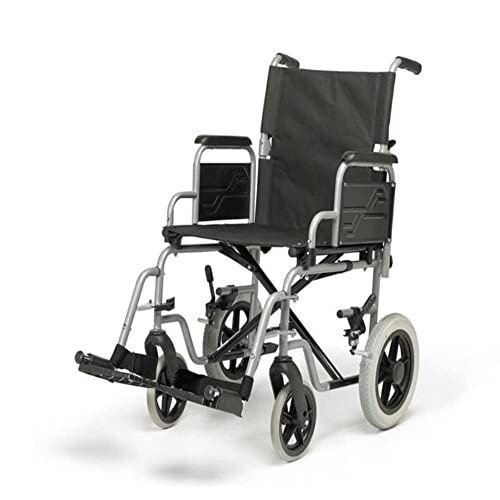5 Killer Qora's Answers To Mobility Scooters

Navigating the World of Mobility Scooters: A Comprehensive Guide
In an age where mobility is increasingly acknowledged as a fundamental element of quality of life, the demand for assistive devices has risen. Amongst these, mobility scooters stand apart as a versatile and empowering alternative for people with mobility obstacles. This detailed guide explores the world of mobility scooters, using insights into their types, benefits, buying factors to consider, and upkeep ideas.
Understanding Mobility Scooters
Mobility scooters are motorized lorries designed to help people with mobility problems in walking around more freely and independently. Read the Full Guide are especially useful for those who find strolling difficult due to conditions such as arthritis, numerous sclerosis, or post-surgical recovery. Unlike manual wheelchairs, mobility scooters require minimal physical effort, making them an exceptional option for extended usage.
Kinds Of Mobility Scooters
Three-Wheel Scooters
- Pros: More maneuverable, lighter, and easier to store.
- Cons: Less stable on rough surface.
- Best For: Indoor and smooth outside surfaces.
Four-Wheel Scooters
- Pros: More stable, better on rough terrain, and can carry much heavier loads.
- Cons: Bulkier and less maneuverable.
- Best For: Outdoor use, specifically in parks and on irregular surfaces.
Portable Scooters
- Pros: Lightweight, collapsible, and easy to transport.
- Cons: Limited range and speed.
- Best For: Travel and periodic use.
Sturdy Scooters
- Pros: Built to handle heavier users and rugged environments.
- Cons: More costly and less portable.
- Best For: Users over 300 pounds or those who need to browse rough terrain.
Standing Scooters
- Pros: Provide a standing position, which can be helpful for users who can not sit for extended periods.
- Cons: Limited stability and range.
- Best For: Users who choose standing and require short-distance assistance.
Advantages of Mobility Scooters
Enhanced Independence
- Mobility scooters allow users to travel longer ranges without fatigue, allowing them to take part more totally in day-to-day activities and social events.
Improved Safety
- With functions like seat belts, anti-tip wheels, and brake systems, mobility scooters provide a much safer option to manual wheelchairs and strolling aids.
Comfort and Support
- Adjustable seats, back-rests, and armrests make sure a comfy ride, lowering the strain on the user's body.
Cost-Effective
- While the preliminary investment can be substantial, mobility scooters are typically more affordable in the long run compared to frequent taxi rides or specialized transportation services.
Social Inclusion
- Mobility scooters assist in higher social interaction by enabling users to participate in neighborhood activities and preserve a more active lifestyle.
Aspects to Consider When Buying a Mobility Scooter
User Needs and Abilities
- Examine the user's physical condition, mobility needs, and day-to-day activities to determine the most appropriate type of scooter.
Size and Weight Capacity
- Guarantee the scooter can accommodate the user's size and weight conveniently and safely.
Variety and Speed
- Consider the normal distance and speed required for everyday use. Some scooters have a series of up to 30 miles on a single charge.
Mobility
- If travel is a top priority, choose a portable scooter that can be quickly taken apart and transported.
Maintenance and Support
- Pick a respectable producer that provides trusted consumer service and maintenance support.
Spending plan
- Set a budget plan and check out alternatives that provide the very best worth for cash. Think about funding options and potential insurance coverage.
Upkeep Tips for Mobility Scooters
Routine Cleaning
- Clean the scooter routinely to avoid dirt and debris from affecting its efficiency. Utilize a soft cloth and moderate cleaning agent.
Battery Maintenance
- Follow the maker's standards for battery charging and maintenance. Regularly check the battery level and avoid deep discharges.
Tire Inspection
- Check the tires for wear and proper inflation. Replace or fix as required to make sure a smooth and safe trip.
Lubrication
- Lubricate moving parts such as the chain and equipments to reduce friction and avoid wear.
Professional Servicing
- Set up routine expert maintenance to address any problems and make sure the scooter stays in optimal condition.
FAQs About Mobility Scooters
Are mobility scooters covered by insurance coverage?
- Some insurance strategies, including Medicare, might cover the expense of mobility scooters under specific conditions. Consult your service provider for specific information.
Can I utilize a mobility scooter inside your home?
- Yes, numerous mobility scooters are created for both indoor and outdoor use. Make sure the scooter is suitable for the type of surface areas you will be navigating.
How quick can mobility scooters go?
- The speed varies by model, however a lot of mobility scooters have a maximum speed of 4 to 8 miles per hour.
Do I require a license to run a mobility scooter?
- In most nations, a license is not required to operate a mobility scooter. Nevertheless, it is necessary to follow regional regulations and traffic laws.
Can I travel with a mobility scooter?
- Lots of mobility scooters are designed to be portable and can be dismantled for travel. Contact airlines and transportation suppliers for specific requirements.
Mobility scooters are a transformative tool for people with mobility obstacles, using a mix of self-reliance, safety, and convenience. By comprehending the different types of scooters, considering key buying elements, and following upkeep best practices, users can take advantage of their mobility scooter and lead a more active and fulfilling life. Whether for daily commutes or leisurely outings, a well-chosen mobility scooter can be a valuable buddy on the journey to boosted mobility and lifestyle.

